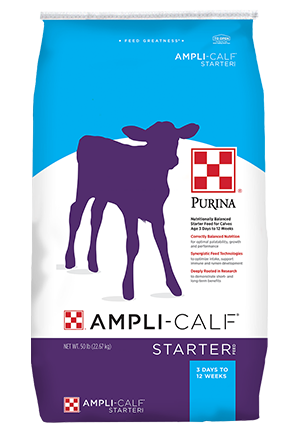
The secret to increased milk production
Heifer : Heifer Nutrition

Raise your hand if you have either said or heard, “If I could just increase my herd’s milk production …”
What if I said there is a way and it’s simple? Better yet, it doesn’t require much more than a slight shift in management and nutrition.
The secret: supporting proper mammary growth and development from an early age.Mammary gland anatomy 101
The mammary gland is made up of two types of tissue: the parenchyma and the mammary fat pad. The parenchyma is often the focus because it is the functioning tissue that includes the alveoli and ducts that will eventually produce and secrete milk, while the mammary fat pad is the surrounding connective tissue that supports the parenchyma and hormone response.
Until the early 2000s, it was believed that bringing heifers into puberty and pregnancy faster with a high plane of nutrition post-weaning would lead to earlier calving, which meant a quicker ROI. However, with this method, producers were seeing fat heifers with poor first lactations. In reality, this was happening because the allometric growth phase was shortened, not allowing for proper parenchyma development, resulting in milk yield loss later in life. Researchers have since identified the unique window of opportunity to influence parenchyma growth early in the calf’s life that results in increased milk production.
Ready to increase your herd’s milk production? Talk to your Purina representative today.
References:
1 Soberon, F., and Van Amburgh, M. 2013. Lactation biology symposium: The effect of nutrient intake from milk or milk replacer of preweaned dairy calves on lactation milk yield as adults: A meta-analysis of current data. J. Anim. Sci. 91:706–712.
What if I said there is a way and it’s simple? Better yet, it doesn’t require much more than a slight shift in management and nutrition.
The secret: supporting proper mammary growth and development from an early age.
Mammary gland anatomy 101
The mammary gland is made up of two types of tissue: the parenchyma and the mammary fat pad. The parenchyma is often the focus because it is the functioning tissue that includes the alveoli and ducts that will eventually produce and secrete milk, while the mammary fat pad is the surrounding connective tissue that supports the parenchyma and hormone response.
The phases of mammary growth and development
Mammary growth and development can be characterized by two phases: allometric and isometric. The allometric growth phase starts at birth and lasts until the calf reaches puberty. In this phase, the mammary gland grows much faster than the body and other organ systems. However, the isometric growth phase begins at puberty, and mammary gland growth slows down to the growth rate of the rest of the body. This is where the secret is revealed. The prepubertal allometric growth phase provides a unique opportunity to maximize future milk yield.The secret
Because the mammary gland is growing rapidly in the allometric phase, the opportunity to target and influence growth and development through nutrition arises. Providing a higher plane of nutrition in the first three months of life helps to promote a higher average daily gain (ADG) and encourages parenchyma development, which is the foundation for increased milk production at first lactation and subsequent lactations.Until the early 2000s, it was believed that bringing heifers into puberty and pregnancy faster with a high plane of nutrition post-weaning would lead to earlier calving, which meant a quicker ROI. However, with this method, producers were seeing fat heifers with poor first lactations. In reality, this was happening because the allometric growth phase was shortened, not allowing for proper parenchyma development, resulting in milk yield loss later in life. Researchers have since identified the unique window of opportunity to influence parenchyma growth early in the calf’s life that results in increased milk production.
The proof is in the numbers
Research by Cornell University showed that each 0.1 lb. increase in preweaning ADG resulted in 155 lbs. more first lactation milk yield.1 The surest way to achieve this increased early life ADG is by feeding a full potential milk replacer (2.5 lbs. of dry matter/hd/d) paired with a high protein starter feed and followed by a high-quality grower feed (see graph). Not only will it lead to higher first lactation milk yield, but the payoff in production can be seen in subsequent lactations.Ready to increase your herd’s milk production? Talk to your Purina representative today.
References:
1 Soberon, F., and Van Amburgh, M. 2013. Lactation biology symposium: The effect of nutrient intake from milk or milk replacer of preweaned dairy calves on lactation milk yield as adults: A meta-analysis of current data. J. Anim. Sci. 91:706–712.


